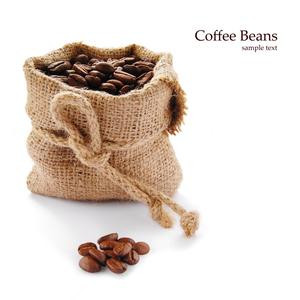Coffee is enjoyable. It feels good to have some coffee when you are alone all day.

It's nice to have some coffee when you're alone, but it's not as enjoyable as drinking with friends. Of course, the most intoxicating thing is to taste the coffee with someone you like or love. When you start drinking, you should only drink coffee in the early morning, a large cup for adults (150 ml) and a small cup for children (50 ml). Coffee with milk can increase the nutrients, which is very suitable for children and teenagers. Within 4 to 7 days, it can be increased to 3-4 cups a day, one at 7: 00 a. M., one at 10: 00 a. M., the third at 1: 00 after lunch, and the last at 3: 00 p. M. After a few weeks, the consumption can be increased according to personal needs and lifestyle (such as mental activity, reading, exercise, smoking, or feeling sad and daily mild depression, common modern life stress). After months or years of regular drinking, people can drink more than 10 cups a day without any problems. There is no specific record of maximum daily coffee intake, and such research may be important for medicine. Long-term drinkers will develop caffeine tolerance and psychological dependence, and if they suddenly stop drinking coffee, they may have withdrawal symptoms such as restlessness, headache, apathy, impatience, inattention and anxiety.
Drinking coffee works best during brain awakening, that is, during the day. The first cup should be drunk within 1 hour after waking up, and the second cup should be drunk at about 10:00 in the morning. In this way, the brain can stay fully awake and be more active at work. This is why people are in a good mood after drinking coffee in the morning, have more energy at work or study, and improve their attention and memory. The third cup of coffee can be drunk after lunch to boost your spirit and strength when you are sleepy. The last drink should be drunk around 3pm. At night, brain activity begins to slow down, and usually at 10:00 at night when the sleeping period comes, you should go to bed. If you want to maintain a regular cycle, do not drink coffee at night, drink a glass of wine may be a better choice.
In the past, the ancient Greeks and Romans would arrange meals at banquets in order to eat and drink comfortably throughout the day. In Greek culture, banquets represent peace, prosperity and elegant social activities. The Romans ate three meals a day. They eat very little breakfast (ientaculum), have a big meal (cena) around 2pm, and eat less dinner (vesperna) in the evening. Extra meals will be arranged between breakfast and dinner. Breakfast is mainly bread, sometimes dipped in wine, olive oil or honey. Unfortunately, in those days, the Romans had no coffee. Cheese and olive oil are eaten with bread. The extra food is made of leftovers, cold meat and bread from the night before, just like today's sandwiches. Basically, it's a light meal, even as a snack, and the big meal is arranged in an hour. A big meal is the main meal of the day. In the early days, it can even be eaten at 2pm. At first, for the rich, it basically consists of three parts. The first part is Gustatio or Promulsio, which is equivalent to today's appetizers. This dish includes salad, radish, mushrooms, eggs, shellfish and so on. Then a glass of Marsham or wine with honey.
Prima Mensa is the main course of a meal. There are even six or seven main dishes in this dish. Guests must choose a variety of fish, poultry and meat. This dish is followed by wheat, salt and home-brewed wine. Most poor Romans are happy to have more than one piece of bread for breakfast. Many people can't leave work for lunch as the rich do. They have to continue to work. The poor and underclass Romans could not lean on their chairs as comfortably as the rich. The Romans at the bottom of society were very easy and economical to eat. Most of their food is wheat, because it is very cheap, and sometimes there are other foods, such as vegetables, vanilla, olive leaves, mushrooms, fish, wild birds and a small piece of meat.
Have a good day (2)
The coffee shop appeared more than 1500 years ago and was welcomed by both the rich and the poor. The 17th century was a period of vital and rapid development for London businessmen. The city coffee shop site was originally a temporary office, located in the heart of public institutions. The importance of coffee houses in British business is so obvious that even in the 20th century, waiters on stock exchanges were called waiters, an inappropriate term from the coffee shop era. and the world's largest insurance exchange uses the name of the unrelated London coffee operator. Coffee shops such as Lloyd's, Garraway's and Jonathan's are the rudiments of modern British commercial institutions, which laid the foundation of world commerce in the 19th century and made these institutions finally occupy commercial advantages. People start a day with coffee, and then start a day of business and money-making work.
However, not all London cafes focus on business transactions, and some spend most of their time discussing politics and learning. There are also many cafes that are "magnificent and lively places of entertainment" as described by Steele's Tatler, reflecting the hedonistic elements of Augustus London. These cafes are the direct forerunner of the earliest club in London, which has a game room and is a place for debauchery and idlers to play cards. From the reign of Queen Anne to the 19th century, gambling was almost a national habit of the idle class, who lost thousands of pounds at a time and wasted their wealth on various gambling games. The coffee shop provides a meeting place for all kinds of people, the most famous of which is the chocolate house in White.
Francis White in Italy opened on St.James Street in 1693. The White Cafe, like a cocoa tree, is called the Chocolate House, but it is doubtful whether cocoa was ever served there. In 1702, White's chocolate house moved once and expanded its operating area, and White "s gradually became a symbol of the city's fashionable gentlemen's gambling venues. Jonathan Swift believes that White's chocolate house is "the root cause of the depravity of half of the British aristocracy", and its regulars are known as White gamblers. The sixth edition of William Hogarth's Journey of the prodigal son tells the story of a crazy gambler who lost his fortune in the casino of White Chocolate House. In April 1773, a fire destroyed the coffee shop. After reconstruction, White's Chocolate House reopened and became the White Club, becoming the first coffee shop in London to become a club.
Have a good day (3)
This change protects customers in coffee houses, which have gradually become targets of theft and attack. Hooligans, liars and robbers often haunt coffee shops, and not all coffee houses have a good reputation. Covent Garden's King Cafe, run by Thomas King, was a famous one at that time, and it enjoyed a high reputation among decent gentlemen. When Thomas was young, he left Eton for fear of not getting a scholarship. Other inferior cafes are just places for prostitution. In 1711, a citizen wrote to the audience: "I have to complain to you about six or seven coffee houses controlled by women in the city." These idols sit there all day and receive worship from young people in so-and-so area. Even in the city's most prestigious coffee shops, violations occur from time to time. While coffee houses provide a place for the exchange of business and political information, they also provide information for robbers and robbers to commit crimes. There, gangsters discuss who is a valuable target, including who wins money at cards at White's chocolate house and who does well in business. The coffee shop is even a center for criminals.
For these reasons and other factors, the transformation of White coffee houses into private clubs marked the beginning of the transformation of coffee houses to other aspects, which led to the decline of coffee houses at the end of the 18th century. In an effort to retain more advanced customers, famous cafes such as St.James and cacao trees, led by White Cafe, began to allow only members. The transformation of the most important and fashionable coffee shop into a private club has had an impact on the original main drink (coffee). The British East India Company began to introduce another important exotic brew (tea). As tea became more and more popular among the population, there were fewer coffee houses. By the end of the 19th century, there were an estimated 1400 cafes left in the London area, the essence of which had been lost and never recovered. The coffee shop was in its heyday from 1652 to 1780, and as a public institution, it was important to every social element in London. As Isaac D'Israeli puts it, "the history of the coffee shop (from which the club was invented) is a combination of etiquette, morality and politics, serving only coffee drinks throughout the day."
Important Notice :
前街咖啡 FrontStreet Coffee has moved to new addredd:
FrontStreet Coffee Address: 315,Donghua East Road,GuangZhou
Tel:020 38364473
- Prev

Coffee is the wisest drink writers like coffee very much when they create new works
Artists and writers like coffee very much when they create new works. Coffee has always been a drink that ignites creativity; it brings emotion, creativity and inspiration. In the past, coffee was used as a food and a medicine. Today, if consumed properly, coffee can prevent rather than cure health problems. When you drink coffee in the company of a good book or a good friend, you are enjoying the delicious coffee.
- Next

Drinking coffee is good for the skin and the skin has the following functions
Our skin not only makes people feel beautiful, but also has many important functions, including protection, thermoregulation, immune response, biochemical synthesis, sensory contact (social and sexual communication). Specifically, the skin has the following functions: (1) to protect the body from bacteria and other foreign substances; (2) sensation: the skin can feel 5 different types of stimulation (touch).
Related
- How did the Salvadoran coffee industry develop in Central America?
- What exactly does the golden cup extraction of coffee mean?
- The Origin of Coffee flower
- [2023 Starbucks World Earth Day] there are more meaningful things besides free Starbucks coffee!
- What kind of coffee is there in Spain? 9 Flavors of Spanish Coffee
- Aromatic African coffee| Kenya's coffee culture and historical production area
- Liberica Coffee Bean knowledge: the characteristics of Liberian Coffee beans of the three original species of Coffee beans
- The origin and formula of Spanish latte introduces the taste characteristics of Bombon coffee in Valencia, Spain.
- How to adjust the solution of over-extracted coffee
- What is the tasting period of coffee beans? What is the period of coffee and beans? How should coffee wake up and raise beans?

